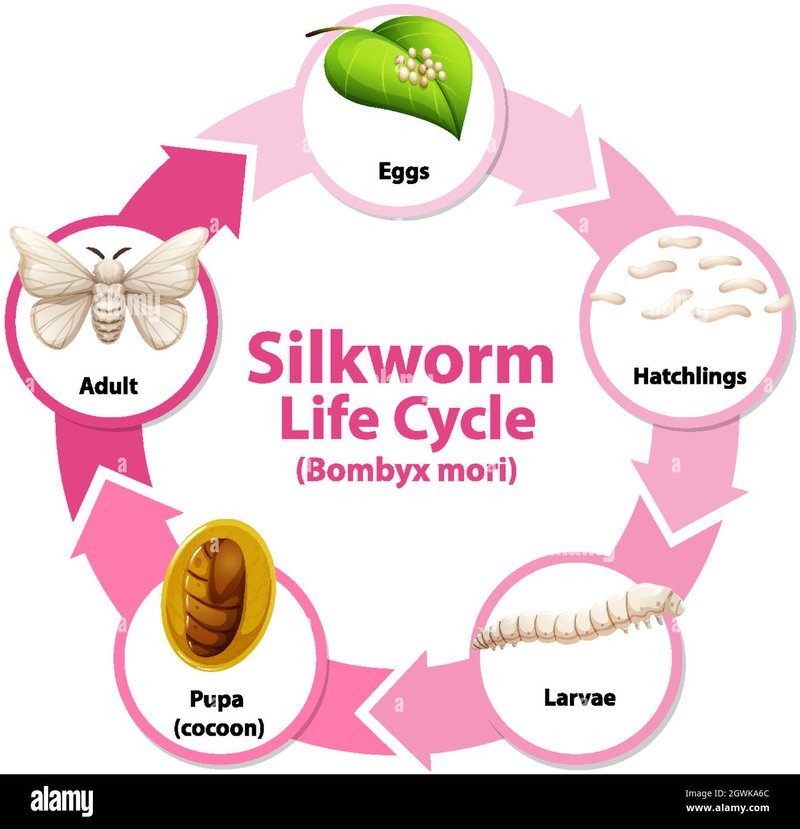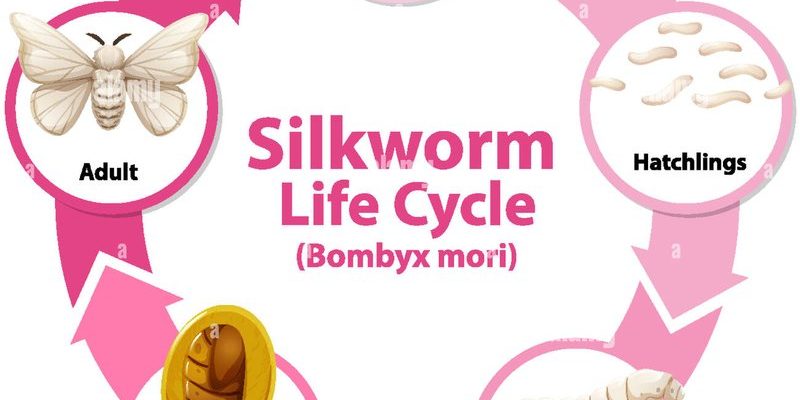
You might be wondering why exactly feeding schedules are so crucial for silkworms. Well, these little guys munch on mulberry leaves, and the right amount and timing can significantly affect their growth and silk production. In this guide, we’ll walk through the ins and outs of creating effective feeding schedules tailored to the needs of growing silkworm larvae. We’ll also sprinkle in some tips and tricks to make the experience even smoother.
Understanding Silkworm Larvae Growth Stages
To create a proper feeding schedule, it helps to first know the different stages of silkworm larvae growth. Silkworms go through five distinct stages, known as instars, before entering the pupal stage. Each stage has unique needs and growth rates.
1. First Instar: After hatching, silkworms are tiny, about the size of a pencil tip. At this stage, they need a small but consistent amount of mulberry leaves to get their digestive systems up and running.
2. Second to Fifth Instar: As the silkworms grow, their appetite increases dramatically. By the time they reach the fifth instar, they can eat almost double their body weight in leaves daily!
3. Pupal Stage: After the final instar, silkworms will stop eating altogether as they prepare to spin their cocoons.
This growth timeline is essential for planning your feeding schedule. Remember, the goal is to provide enough food at each stage so your silkworms grow strong and healthy, leading to better silk production later on.
Creating a Feeding Schedule
Now that you understand the growth stages, it’s time to set up a feeding schedule. Here’s a straightforward breakdown:
– Age of Silkworms: Your feeding schedule will depend heavily on their age. Generally, younger silkworms need to be fed smaller amounts more frequently, while older larvae require larger amounts less frequently.
– Daily Feeding: It’s best to feed your silkworms fresh, organic mulberry leaves twice a day. Morning and evening feedings align nicely with their natural eating patterns.
– Amount to Feed: Start small with about 1-2 leaves for younger silkworms. As they grow, increase this to about 4-8 leaves per feeding during the fifth instar.
Here’s an example for a daily feeding routine:
| Instar Stage | Morning Feed (Leaves) | Evening Feed (Leaves) |
|---|---|---|
| 1st | 1 | 1 |
| 2nd | 2 | 2 |
| 3rd | 3 | 3 |
| 4th | 4 | 4 |
| 5th | 8 | 8 |
This schedule helps ensure your silkworms get ample nutrition throughout their growth phases.
The Importance of Fresh Mulberry Leaves
Feeding your silkworm larvae fresh mulberry leaves is crucial. You might be thinking, “Can’t I just use dried leaves?” Well, the short answer is no. Silkworms thrive on fresh leaves rich in moisture and nutrients. Dried leaves lack the essential vitamins and minerals that support healthy growth.
Here’s what to look for when sourcing your mulberry leaves:
- Freshness: Choose leaves that are vibrant green with no browning or wilting.
- Organic Options: If possible, opt for organic leaves to avoid pesticides that can harm your silkworms.
- Size Matters: Try to select leaves that are appropriately sized for the age of your silkworms.
Remember to wash the leaves gently before feeding them to remove any potential contaminants. Fresh is always best, and your silkworms will appreciate it.
Adjusting the Feeding Schedule as Silkworms Grow
As your silkworms progress through their growth stages, you’ll want to adjust their feeding schedule to match their needs. This isn’t a one-size-fits-all situation—after all, every group of larvae might grow at different rates.
– Watch for Signs: If you notice your silkworms seem hungry or are fighting over food, it’s a sign they need more. Conversely, if they’re not eating much or leaves are left uneaten, you might be overfeeding.
– Consider Environmental Factors: Temperature and humidity can influence how much your silkworms eat. Warmer conditions often lead to faster growth, which means they’ll need more food.
– Monitor Growth Patterns: Keeping a close eye on their growth will help you tweak their feeding amounts and frequencies as necessary.
You’ll become familiar with your silkworms’ habits, which makes adjustments easier over time.
Common Feeding Problems and Solutions
While feeding silkworms may seem straightforward, several common problems can arise. Here are a few you might encounter and tips on how to handle them:
– Refusal to Eat: If your silkworms aren’t eating, check the freshness of the leaves and ensure they’re the right size. Sometimes, they may just be picky!
– Overfeeding: Too much food can lead to issues like mold growth on uneaten leaves. If you notice this, cut back on the amount you’re offering.
– Inconsistent Schedules: Regular feeding is key. Skipping feedings can lead to stunted growth. Try to stick to your schedule as closely as possible.
These problems can be easily managed with some keen observation and a little adjustment to your routine.
Feeding Routine Summary
In summary, a successful feeding schedule for growing silkworm larvae hinges on understanding their growth stages, providing fresh mulberry leaves, and adjusting as needed. Here’s a quick recap of the key points:
1. Know Their Growth Stages: Different stages mean different needs.
2. Feeding Schedule: Feed twice a day with increasing amounts as they grow.
3. Use Fresh Leaves: Always opt for fresh, organic mulberry leaves.
4. Adapt and Adjust: Be prepared to tweak your schedule based on their behavior and growth.
By following these guidelines, you’ll provide a healthy, nourishing environment for your silkworms, laying the groundwork for beautiful silk later on. Happy rearing!
In conclusion, while raising silkworms may come with its challenges, establishing a thorough feeding schedule can make all the difference. You’ll find that the more you learn about these amazing creatures, the more rewarding the experience will be. Enjoy the journey, and may your silkworms flourish!

